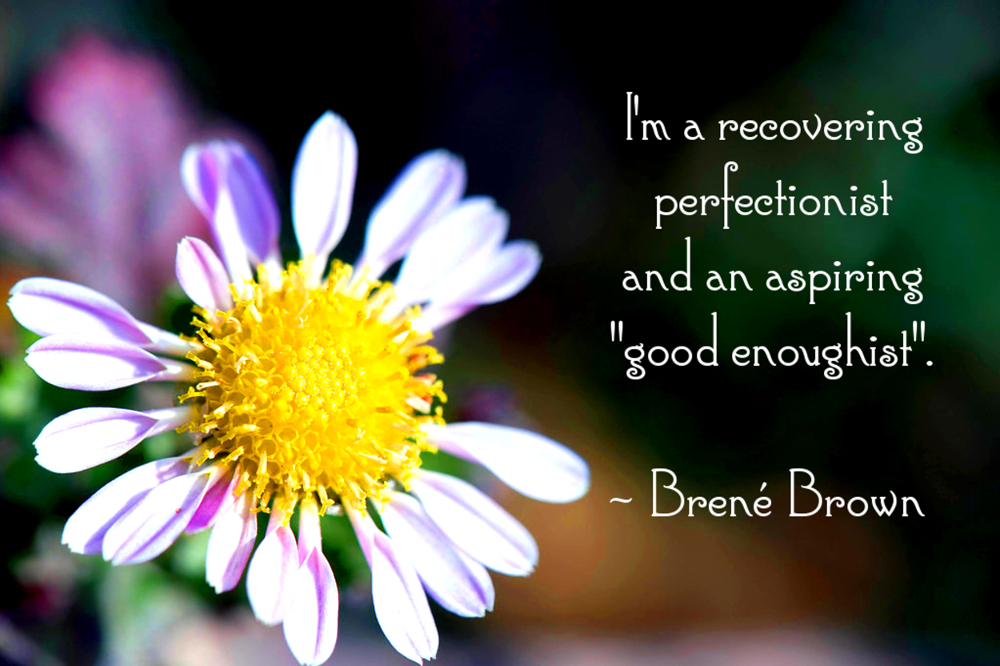Estimated Reading Time 7 Minutes
Hey You! Welcome to The Vibrant Life Podcast. My name is Emily Romrell and I hope you’re having a happy day. If not hopefully this episode will make it a little better.
I’m really excited about the topic this week. This is an idea that’s been percolating down into my heart and brain for a while now. I usually take some time to research ideas for the podcast online. It’s fun to prospect for any golden nuggets of wisdom already out there. So I was fascinated to discover this philosophy that’s been around for centuries in Japanese culture but that’s definitely foreign to Western ideals. Today we’re talking about Wabi Sabi.
If when I say that word you are picturing the spicy green stuff that comes with your sushi, that’s not quite right. That’s Wasabi. I like sushi, but wasabi isn’t really my thing. But Wabi Sabi is definitely something I can get down with. In simple terms, Wabi Sabi is the art of embracing and appreciating imperfection. (I’ve included a couple of insightful videos from youtube in the show notes if you want to check those out.)
There’s a great quote from Brené Brown where she says, “I’m a recovering perfectionist and an aspiring ‘good enoughist’.”
As a recovering perfectionist myself. I really relate to that. Fear stopped me in my tracks for a long time. I didn’t want to put anything out into the world because like Jo March says in the movie Little Women, “I am hopelessly flawed.” Even now, it’s a big deal for me to put my content out there for all of you. I want my stuff to be perfect. But I’m learning to settle for good enough.
One of my favorite teachers to listen to is Brooke Castillo. She is truly inspiring and she’s the host of The Life Coach School Podcast. Her take on perfectionism is pretty great. In her episode on productivity she explains:
Now, you can’t put D and F work out into the world. That’s not going to work. So you can’t be sloppy and non-attentive without a plan. That’s not going to work, but you also can’t be constantly striving for A+ work and perfectionism because you won’t be able to produce at that level. The aim is B-. You got to get it done, you got to be efficient, you got to be productive, it’s got to be high quality, it’s got to be passable. It’s not just passable mediocre, it’s at a C, you got B-, it’s good stuff.”
In a world where anything less than an A can feel like failure, this is great advice. The truth is that C is average. That means most people on a given day produce C work. Do anything above that and you will stand out. And here’s another truth. The more work you put out the better you get. So you may start with B- material but as you grow and learn you will eventually start putting out more A quality stuff. “Practice makes perfect” is the saying that ironically comes to mind. There’s a link to that podcast episode in my show notes. I highly recommend giving it a listen.
Along with this idea of getting work out there even if it’s not perfect, is the idea of simplicity. People like to overcomplicate things. I know I am guilty of this. It’s easy to over-analyze and turn a job that you could do in 10 steps into 20 steps just because you’re thinking too hard. Or maybe, it’s a lot easier to make a plan than to put it into action. That hits home for me. I have a lot of fun making lists and elaborate plans. Imagination is great. I can plan details and envision the perfect scenarios for it all to take place.
Funny thing though, life is not perfect. When you take an idea out of your head and put it into action a lot of chaos bubbles up. Other people you might be working with will not see things exactly the same way you do. Even if you work by yourself, transforming an idea into reality can be difficult and the results are rarely the same as the picture in your head. It can be frustrating. But if you allow yourself to go with the flow, sometimes the results are better than what you imagined; almost always different, but sometimes better.
One way to accept this journey of creation is to attempt to make things as simple as possible. In writing, they teach you to avoid fancy or fluffy words. I am a sucker for a fun word, but the point is, to get to the point. The more concise you can be, the better. And in the wabi sabi philosophy, simplicity allows you to see the soul of a thing. You can see its beauty.

But Wabi Sabi is more than just accepting our imperfections or being effectively simple. It’s truly finding the beauty in something or someone.
Keeping with Japanese culture you may be familiar with Kintsugi. This is the Japanese art of repairing broken pottery by mending the cracks with gold or silver. The broken object becomes even more beautiful than before.
I swear you can’t throw an imaginary stick out into the universe without hitting a metaphor. But this is one to remember. I don’t think it’s possible to go through life without being broken. I don’t care who you are, life will knock you down hard. You’re bound to get scars.
But broken things can mend and become more glorious from the breaking. Ernest Hemingway said, “We are all broken—that’s how the light gets in.” Beauty is light. Anything beautiful is beautiful because it resonates with the light inside us. So if you happen to be feeling broken at the moment, that’s good to remember.
I believe that we were all sent to this earth to gain experiences that ultimately polish, refine, and mold us into our highest selves. We can’t reach our potential without hardship. But beauty is born from hardship.
In the past, I’ve wondered why it is that artists and creators seem to deal with so much pain. But I’ve come to realize that we all have pain but it’s the artists and creators that are able to transform their pain with their passion. That option is available to all of us.

Another part of Wabi Sabi is appreciating age and the character it brings in nature, in objects, and in ourselves. A great example of this is the patina that comes to objects through time and use. Patinas are produced on metals through oxidation. Iron rusts, copper and brass turn green, and what once was shiny and new takes on a different beauty; perhaps even more special because of the unique personality that manifests through time.
One of the most famous examples of this is the Statue of Liberty. Did you know that when she was first built the statue was all shiny and coppery brown? Just like a new penny. According to the National Park Service, the statue is made of thirty tons of copper – so I guess more like 435 million shiny new pennies. But over time that blue-green patina transformed Lady Liberty into the majestic symbol that we recognize today. There was a debate back in the day whether or not to clean the statue and return her to the original copper color. But the public denounced this idea, recognizing the character of the statue is now even more special than when it was created.
The same holds true for people. Whether it’s laugh lines, age spots, gray hairs, or scars, we are all transformed as we live our lives. We might not always appreciate this for what it is. But each of these marks adds to our character and in my opinion, makes us more beautiful.
But it’s not just about appreciating the physical signs of age, it’s also understanding that our inner limitations and weaknesses can refine us in beautiful ways as well.
One thing I’ve really been trying to work on is self-love. It’s not easy. There’s a figurative monster in my head lurking in the background that loves to whisper negative thoughts to me throughout the day. I think a lot of us struggle with our flaws and the fear of showing them to others. The fear of seeing them in the mirror is real. But this idea of wabi sabi helps.
It’s actually helped me dig up some courage. I decided what the heck, maybe I’ll put a few of my songs on my website. I love playing guitar but I am definitely not a pro. I’m what you might call a campfire guitarist. Chords are my friend, and I’m not an amazing singer. I don’t have great equipment so the sound quality isn’t amazing either. But the funny thing is that since I recorded a couple songs and put them up. I’ve listened to my past self sing to my present self and it’s been really empowering.
It’s the same story with this podcast. It took me a long time to get the guts to do this. But this idea of promoting a vibrant life is something that I feel called to do. I make a lot of mistakes, but I am learning as I create these episodes. I’m getting better every time. And I am realizing how far I’ve come along this road even if I know there’s still a big stretch left to travel. If we can recognize that imperfections make us beautiful, it opens the door for us to truly be ourselves and strive to reach our full potential.
So this week my challenge to you is to be brave and put yourself out there. None of us are perfect however hard we try to be. But an imperfect effort gives you at least some results. Failure to act because of our flaws only leaves us with regret.
Before I go, are you enjoying the podcast? It’s been a thrill for me to put it out for you. If you feel like The Vibrant Life Podcast is adding value to your life, how about a quick thank you in the form of a review on iTunes? I know it takes a couple of minutes, but it would me a lot. Thanks for helping me reach more listeners and getting this podcast to as many people as possible. Thanks, Peeps. Live The Vibrant Life!



